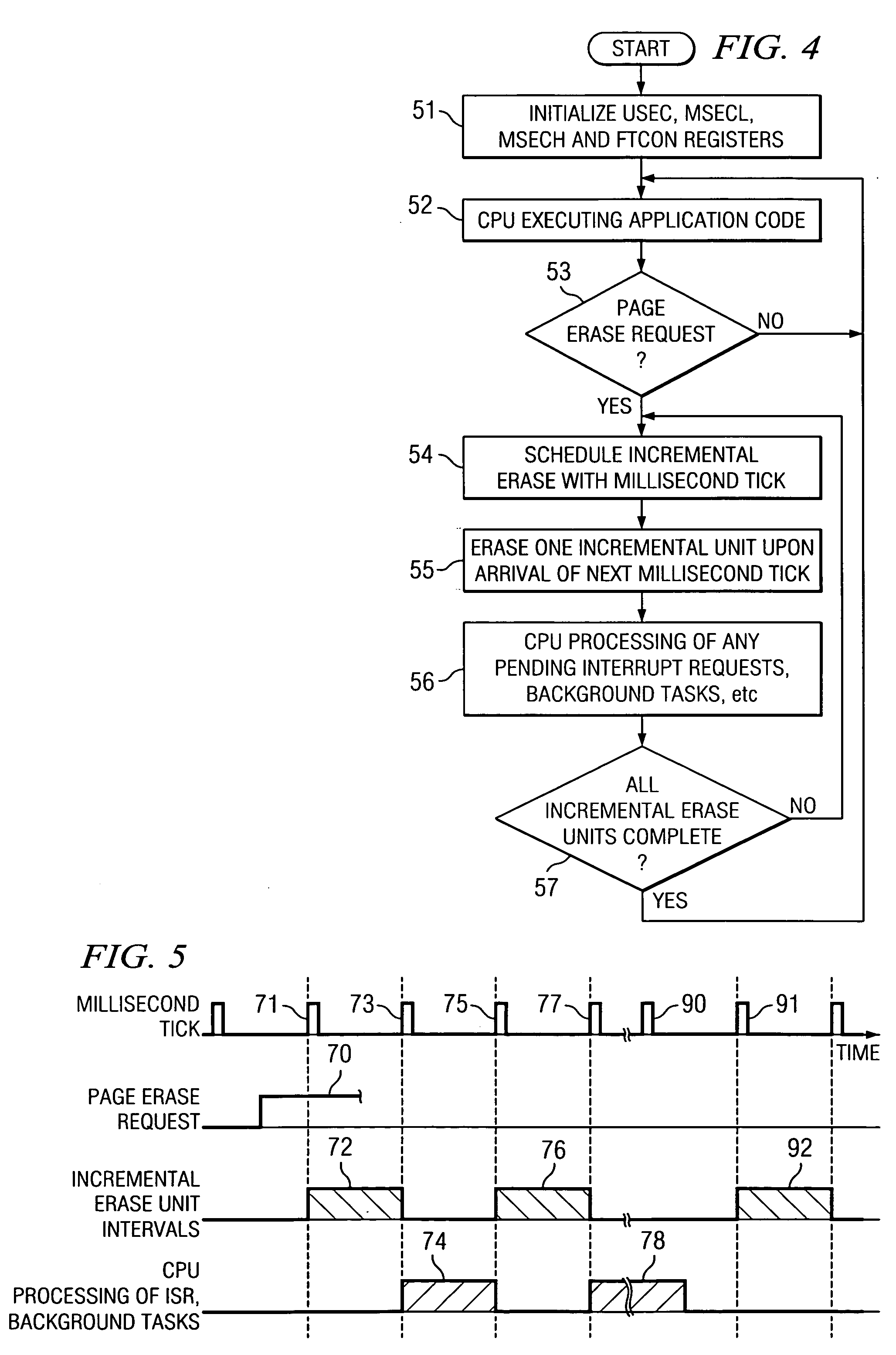Incremental erasing of flash memory to improve system performance
- Summary
- Abstract
- Description
- Claims
- Application Information
AI Technical Summary
Benefits of technology
Problems solved by technology
Method used
Image
Examples
Embodiment Construction
[0041]FIG. 3 is a simplified of diagram of a 24-bit delta sigma ADC microsystem 10 including a microcontroller which includes a CPU, a flash memory cell array, and a flash memory controller. Microsystem 10 also includes an ADC, a DAC, and a number of peripheral devices. Microsystem 10 stores and executes an algorithm which segments flash memory page erase operations to allow faster system response by the CPU to interrupt service routine requests. Microsystem 10 can be the assignee's MSC 1210 microsystem chip.
[0042] Referring to FIG. 3, microsystem 10 is implemented on a single integrated circuit chip, and includes a CPU (central processing unit) 11 coupled to a memory subsystem 17 which includes a static random access memory (SRAM) 14, a read-only memory (ROM) 13, and a TSMC flash memory system including a flash memory array 12 and a flash memory controller 12A, all accessible by CPU 11 via a memory bus 19. The TSMC flash memory system 12,12A can be the TSMC SFA0008—08A8I product w...
PUM
 Login to View More
Login to View More Abstract
Description
Claims
Application Information
 Login to View More
Login to View More - R&D
- Intellectual Property
- Life Sciences
- Materials
- Tech Scout
- Unparalleled Data Quality
- Higher Quality Content
- 60% Fewer Hallucinations
Browse by: Latest US Patents, China's latest patents, Technical Efficacy Thesaurus, Application Domain, Technology Topic, Popular Technical Reports.
© 2025 PatSnap. All rights reserved.Legal|Privacy policy|Modern Slavery Act Transparency Statement|Sitemap|About US| Contact US: help@patsnap.com



